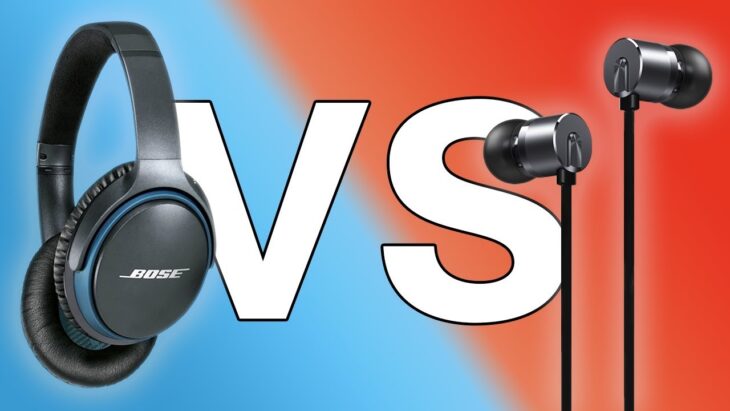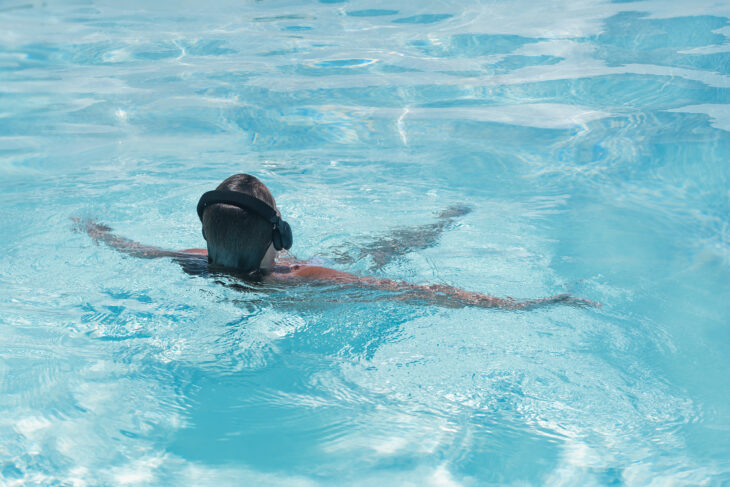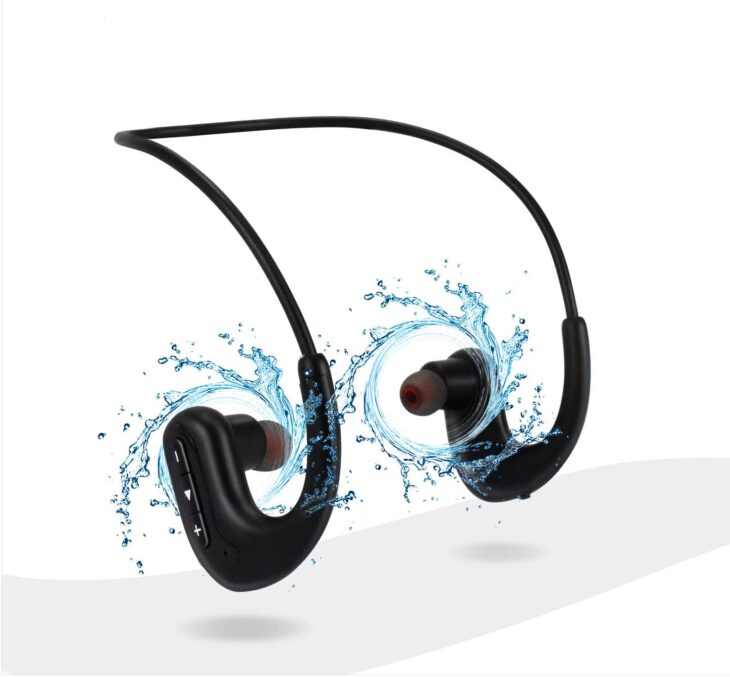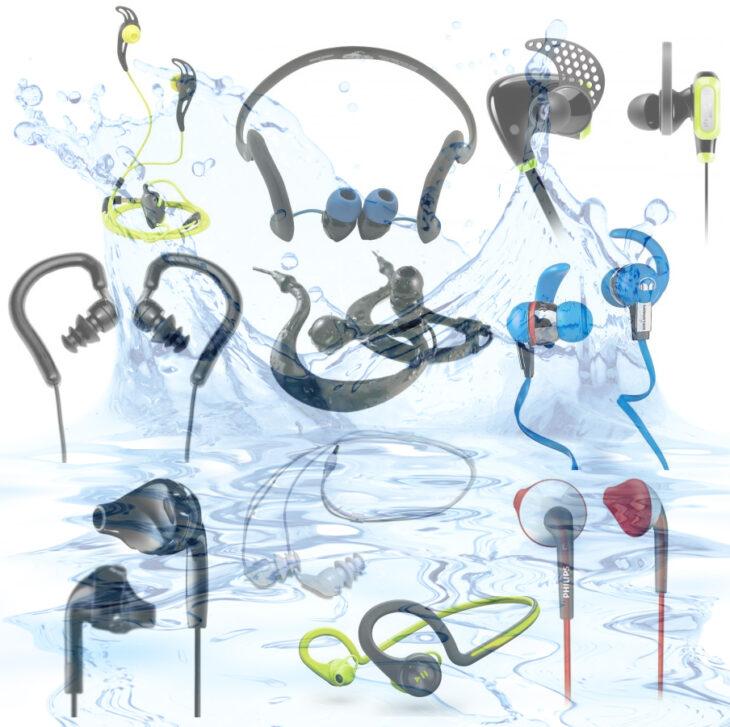We all love our headphones.
They help us to work, focus, study, work out, relax, play, and almost everything else under the sun. We’ve listened through tiny buds for our ears and huge foamed cups that cover the sides of our heads. But sometimes the lives of these auditory pals of ours don’t last very long, due to the buildup of moisture and sweat around our ears and hair. This is where waterproof headphones come in.
Waterproof headphones are a wonder of technology. They’re much more resilient than their non-waterproof cousins. When in the gym or even the pool, they can flawlessly play your music whilst withstanding any form of wetness. But it does make you wonder: how are these gadgets made? Read on, and we’ll tell you.
Contents
Headphones vs Earphones

img source: youtube.com
When it comes to waterproofing, both headphones and earphones have been bestowed with this technological advancement. Now, people can listen to their favorite tunes while taking a dip or even swimming competitively. Gym-goers and health buffs don’t have to worry so much about their sweat and ear gunk corrupting the headphones’ inner workings. If you’re looking for a specific set of headphones to suit your needs at the pool, the gym or the beach, click here.
How Waterproof Headphones are Made
1. Ingress Protection Code (IP Code)
The Ingress Protection Code, or the International Protection Code (IP Code for short), is the main indicator of the waterproofing of any gadget. Therefore, gadgets that are not supposed to come into contact with water do not bear an IP Code. However, the IP Code does not entirely represent waterproofing.
The IP Code is formatted as such:
IPXX
The IP represents the beginning of the code. The first X, representing solid or dust proofing, has a rating from 0-6. The second X, representing waterproofing, has a rating of 0-8. The higher the number indicated on the X, the more resilient the item is. Below is a more detailed explanation of the numbers and what they each mean:
- Dustproofing
0 – No protection.
1 – Protection against solid objects 50mm in size or greater. (e.g., hand)
2 – Protection against solid objects 12.5mm in size or greater. (e.g., finger)
3 – Protection against solid objects 2.5mm in size or greater. (e.g., screwdriver)
4 – Protection against solid objects 1mm in size or greater. (e.g., wire)
5 – Dust Protected. Limited dust ingress into the enclosure. Does not affect functionality. Resists two to eight hours of exposure.
6 -Total protection against dust. Resists two to eight hours of exposure.
- Waterproofing
0 – No protection.
1 – Protection against vertically falling water droplets. Limited water ingress into the enclosure.
2 – Protection against vertically falling water droplets in a 15-degree tilt. Limited water ingress into the enclosure.
3 – Protection against water sprays in a 60-degree tilt. Limited water ingress into the enclosure for up to three minutes.
4 – Protection against water sprays from all directions. Limited water ingress into the enclosure.
5 – Protection against pressurized water jets. Limited water ingress into the enclosure.
6 – Protection against water waves or highly pressurized water jets. No ingress of water into the enclosure.
7 – Protection against aquatic immersion from 15cm up to 1m for 30 minutes.
8 – Total protection against water pressure and immersion for long periods of time.
Be sure to look out for these numbers on the packaging or manual of the headphones or the headphones themselves to know which ones are suitable for your next activity. Anything from IPX2 up to IPX6 is resistant against water but anything with an IPX7 or IPX8 is waterproof. Headphones with the latter two ratings (IPX7 and IPX8) are fully submersible.
2. Waterproofing Headphones

Headphones can be classified into two types:
- Over-the-Ear/Around-the-Ear – This style of headphones loosely dangles from the top of the ear, only covering it lightly. It allows for the entrance of more ambient noise than usual. This is the smaller type.
- Around-the-Ear – This style of headphones completely envelops the ear, providing minimal to no ambient sound entering. This is the bigger type that’s often associated with gaming.
Both types of headphones are made of Rexine or polyurethane leather (PU leather), both artificial types of leather. The purpose of this material is to keep out any moisture, rain, sweat, or any liquids from entering the headphones’ inner workings. Holding the headphones together is a frame made from a rust-proof material such as plastic, silicone rubber, or stainless steel.
The joints in the chambers of each earpiece are sealed off with a strong glue, further ensuring that no water gets through; this includes any gaps that may allow water to enter such as ports, buttons, or speaker holes. The outer covering of the headphones is made from an impermeable, stretched polyester film (Mylar) that make the enclosure of the device completely watertight.
3. Waterproofing Earphones

img source: amazon.com
Transducers are parts in your earphones that convert one form of energy into another. This is what brings the sounds to your ears. Thus, these sensitive parts are required to be waterproofed using sealants, especially if they’re for outdoor earphones.
Aside from these, the cable connecting the two earpieces is completely watertight, usually made from silicone rubber. This makes sure that no liquid or moisture permeates its outer coating. Some of these cables are designed to fit under the goggle strap or even over the ear, preventing or minimizing the wearer’s chances of dragging the cable.
These earpieces, sometimes called earbuds, earplugs, or ear tips, come in different shapes and sizes. These go directly into the wearer’s ear canal. The way they fit usually depends on the curves of the wearer’s outer-ear. Like the cable that connects them, both earbuds are made from silicone rubber or soft plastic, complete with a waterproof finish.
Enjoy Without Worry (or Water!)

img source: wirerealm.com
When you find yourself a nice pair of waterproof headphones, you can rest assured knowing that they won’t break when submerged or soaked. Whether you use them for swimming or working out at the gym, it’s one less thing to have to worry about. Keep the IP codes in mind and know how waterproof your headphones are; that way, you won’t have to spend extra for a brand-new pair after drowning them in the water.
